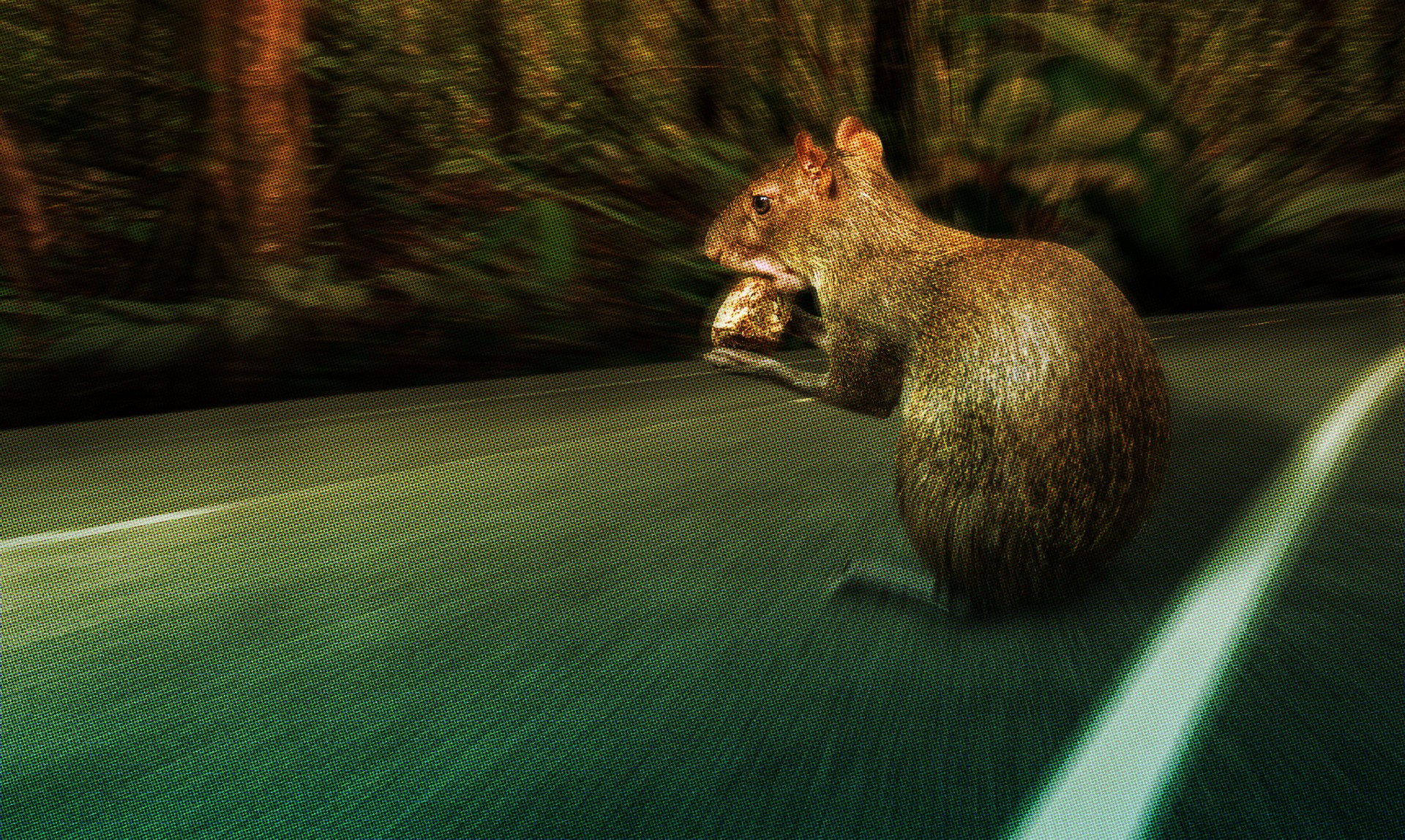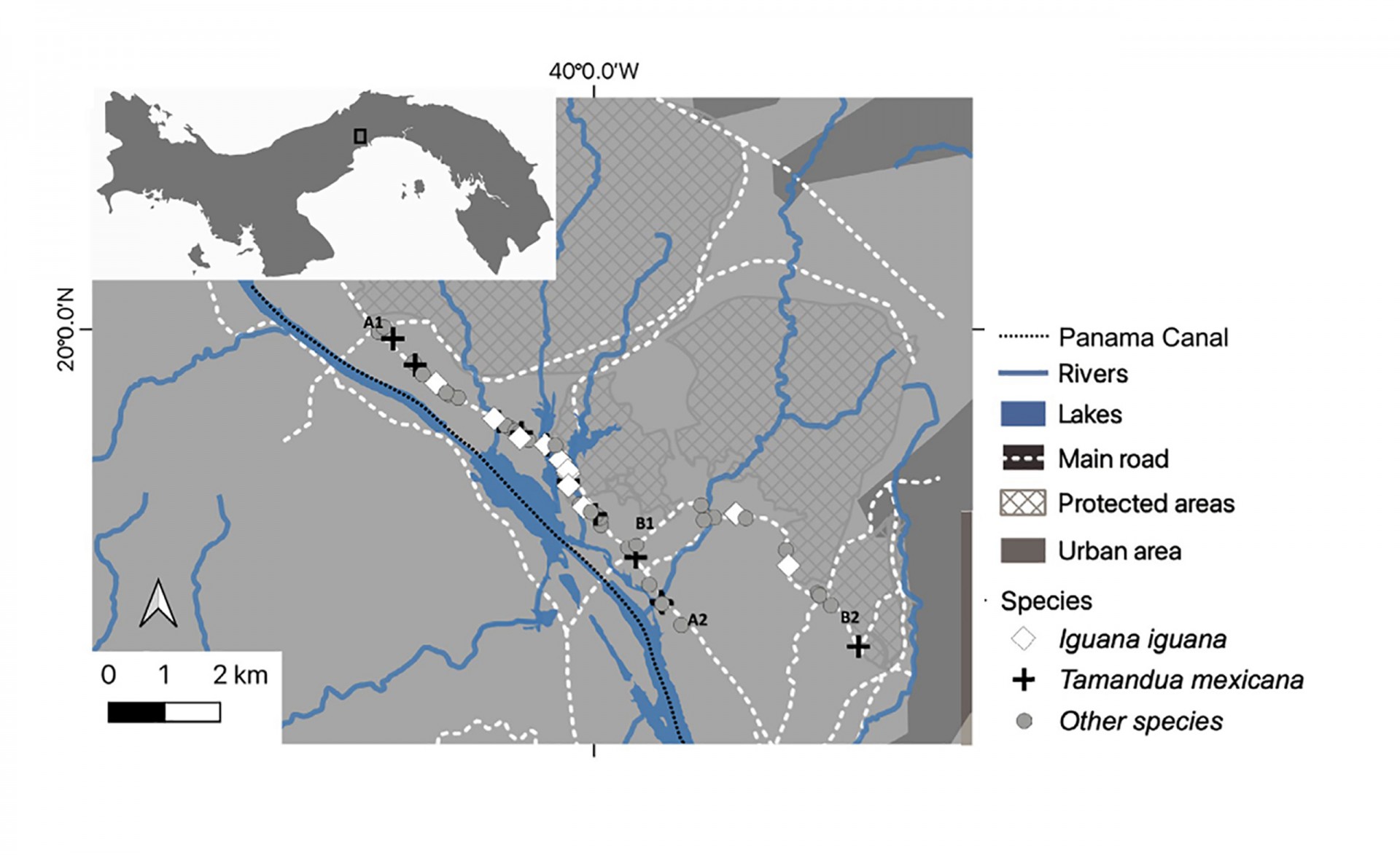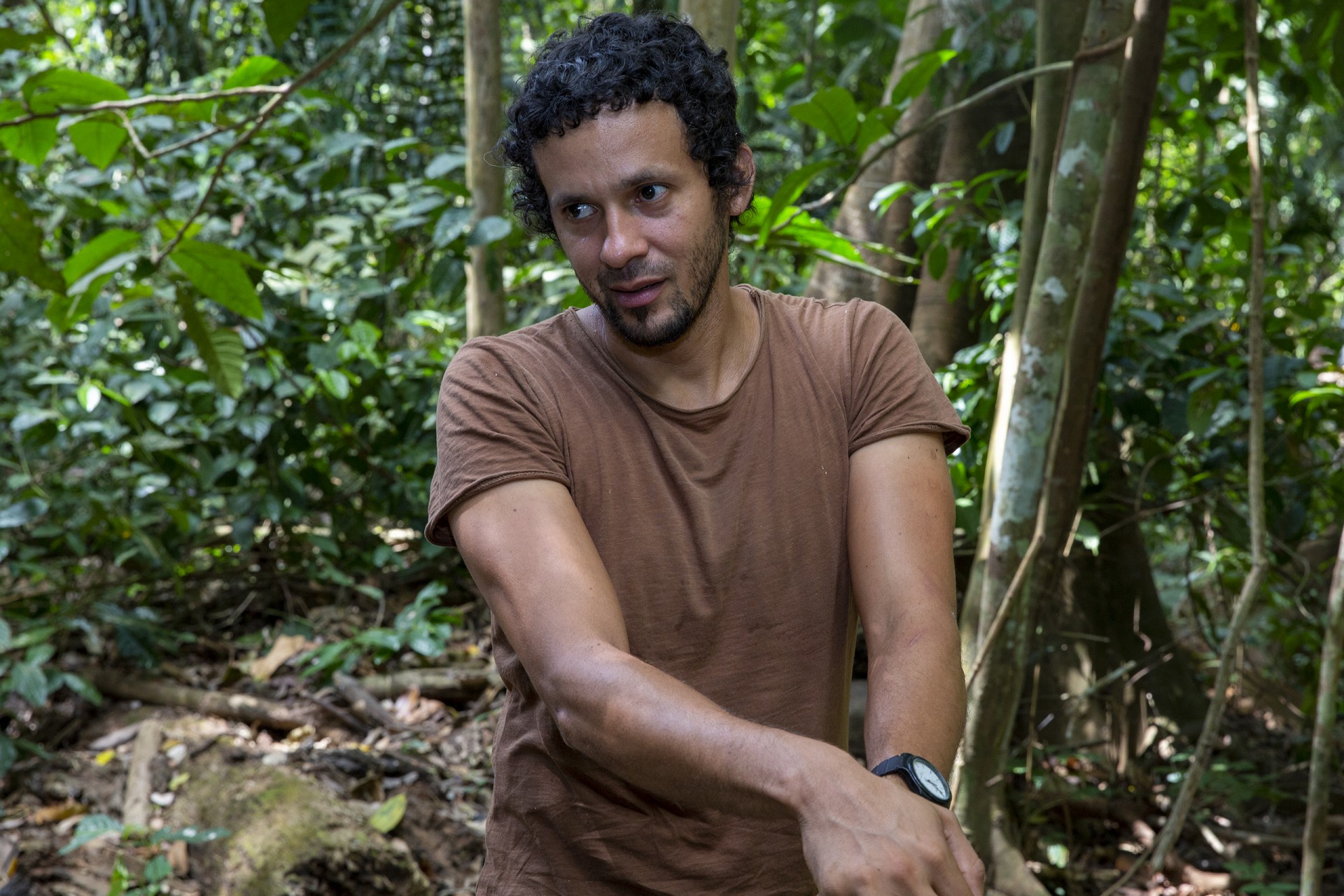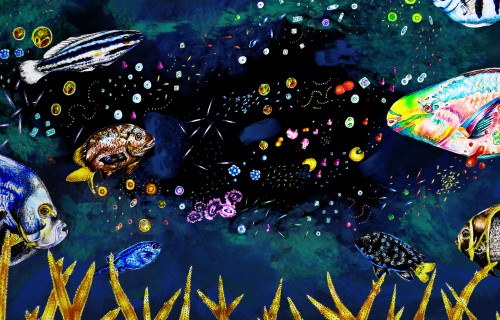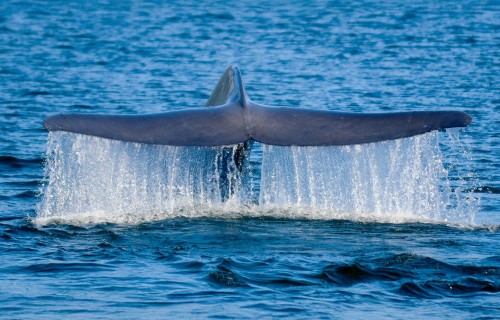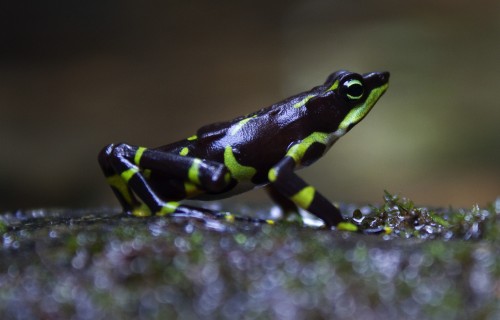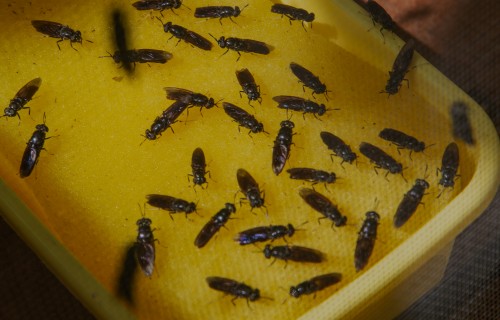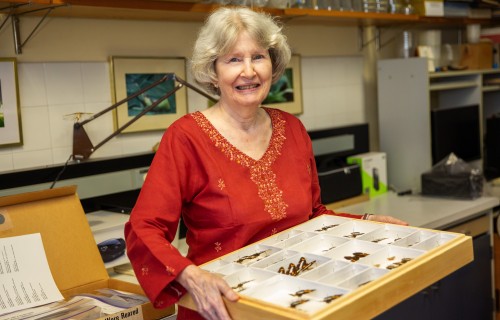Smithsonian science helps understand blue whale migratory and foraging patterns to inform conservation strategies
Roadkill
Understanding wildlife
vulnerability to road networks
Panama
Text by Leila Nilipour
During three years, local scientist Dumas Gálvez drove along a road parallel to a rainforest looking out for dead vertebrates.
Panama is considered one of the countries with the highest human footprint on vertebrate communities. And roads are some of the main human-made infrastructures causing habitat fragmentation and loss, pollution and wildlife roadkill. However, roadkill are very poorly studied in many countries, particularly tropical countries in Latin America, despite it being one of the most obvious impacts on biodiversity. Panama is no exception. In August 2017, Dumas Gálvez, a postdoctoral researcher at the Smithsonian Tropical Research Institute (STRI), set out to change that.
He began driving along a road parallel to the Camino de Cruces National Park several times per week, and kept it up for three years, documenting any roadkill he encountered, except for amphibians. He drove mostly by rainforest, but also near suburban areas and the Panama Canal.
Road ecology data near biodiversity hotspots are crucial for the implementation of measures to reduce roadkill, such as animal bridges, speed bumps or reduced speed limits. Credit: Illustration, Jorge Alemán; Agouti Photo, Steve Paton, STRI.
Gálvez documented a total of 79 roadkill. Most of them were mammals and reptiles. He also found that during hotter and rainier months, there were fewer wildlife collisions. According to Gálvez, who recently published his findings in Biotropica, this may be due to decreased driving speed on rainy days, or decreased animal activity on hot or rainy days. Although these behaviors may vary across species.
“Roadkill probability is likely to be associated with the biology and ecology of each species,” said Gálvez. “For example, mating period could increase the activity of certain species, making them more vulnerable to roads. If this mating period coincides with a season, for example, the dry season for iguanas in Panama, then we can expect a higher risk for that species and we could implement a mitigation plan.”
During his monitoring experiment, Gálvez found that in a curved section of the road the likelihood of finding roadkill increased. This could be due to reduced visibility, but also due to the proximity of this particular section of the road to a water source.
Dumas Galvez’s study road spanned almost 13km, passing through protected areas, suburban areas and the Panama Canal. This map shows details on roadkill events for green iguanas, tamanduas, and other species. Credit: Dumas Galvez.
Of all three years, 2020 showed a slight decrease in roadkills. This could have been related to lower traffic, given the very strict lockdown measures implemented in Panama during the first months of the pandemic. Yet Gálvez has another possible explanation in mind.
“A reduction in mortality could result from population depletion due to massive mortality. More long-term studies are needed to better understand roadkill trends,” said Gálvez.
Ultimately, this study is a preliminary step towards improving our understanding of roadkill in Panama. Further studies, or even citizen science projects, could help evaluate factors that influence traffic flow and its consequences for wildlife collisions. These road ecology data near biodiversity hotspots are crucial for the implementation of mitigation measures, such as animal right-of-ways or bridges, speed bumps or reduced speed limits.
Dumas encourages other biologists in the country to collect roadkill data, publish their results and share their findings with policy makers. Credit: Jorge Alemán, STRI.
Finally, roadkills could be reduced through educational programs and stricter enforcement of traffic regulations.
“I’d like to invite other biologists to work on this issue by collecting data, publishing their results and more importantly, sharing their data with policy makers,” Gálvez said. “We often hear that policymaking should be based on evidence; well, here is the evidence, at least for this route, and this problem is not only for this road but all the roads near forests in the country.”
Citation: Gálvez, D. (2021). Three-year monitoring of roadkill trend in a road adjacent to a national park in Panama. Biotropica. https://doi.org/10.1111/btp.12995

